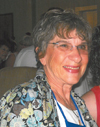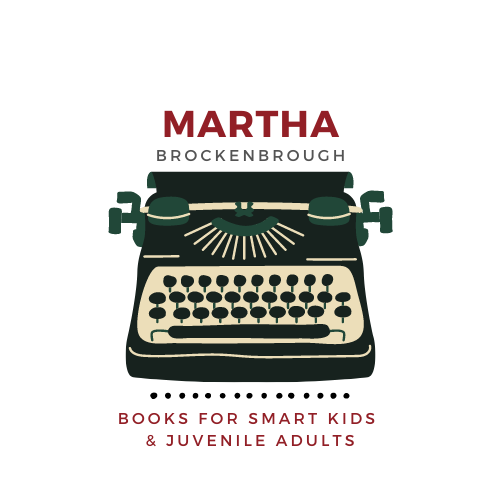 Patricia Lee Gauch
Patricia Lee Gauch
My SCBWI chapter invited Patricia Lee Gauch to Washington state for a retreat a couple of years ago, and I got to see first-hand what a fine teacher she is: gentle but demanding, and full of information distilled from a phenomenal career in children's literature.
Patti is not only a published author herself (Christina Katerina and the Box, Thunder at Gettysburg, and The Knitting of Elizabeth Amelia), she has edited some of the finest writers in the business: Brian Jacques, T.A. Barron, Andrew Clements, Jane Yolen, Janet Lisle, Katherine Erkskine, and Barbara Joosse.
She's worked with artists Eric Carle, David Small, Ed Young, Loren Long. Three books she edited have won Caldecott Medals: Owl Moon, Lon Po Po, and So You Want to Be President.
She's also an unbelievably generous and conscientious editor (though she's retired from her post as executive editor at Philomel Books). Here's an anecdote I received from a fellow SCBWI member who'd submitted to Patti.
Three years after submitting a query and chapter to her, I received a two-page hand-written note and my chapter back with another half-page of her suggestions, sent from her home address. The submission had somehow gone astray and in cleaning out her office (she’s leaving Philomel next month) she ran across it. On retirement, most editors would have probably moved all their stacks to someone else’s desk or upended their drawers into a dumpster. Not Patricia Lee Gauch. I’m relieved to hear she will still be teaching.
Patti will speak on a panel about picture books at our national conference in New York Jan. 28-30. You do not want to miss it. She was kind enough to answer a few of my questions beforehand:
People keep saying it’s a hard time for picture books. How can people who love the form improve their odds at getting published?
The truth is, there have been too many picture books published for many many years. The shelves of Barnes and Noble and Borders, as well as independent book stores, are packed with picture books. If they have too many books, they have to file them spine out: What mother or grandmother is going to search for a picture book to purchase by the uniqueness of a spine! The face-out-books have a good chance of being chosen by Grandma or Mother, but how many spots are there for face-out books.
In addition: over time, too many books have been published that are simply not up to the standards of earlier picture books. You don't have to go back to Mike Mulligan and the Steam Shovel to find great picture books. Books like Andrew Henry's Meadow by Doris Burn, Harry the Dirty Dog and my own children's favorite: The Sugar Mouse Cake, both by Gene Zion and Margaret Bloy Graham, are great books from that middle period. Too often in recent books, the text is weak, an excuse for some artist's interesting art. I think there are still great picture books being created--look at Mo Willems' books--I love his sense of humor or Kevin Henkes' books--what a genius; Loren Long (Toy Boat, Otis) is both writer and artist, and it works. But there is probably some kind of adjusting going on--maybe editors and publishers are reconsidering what a picture book can be; maybe they are going to raise standards! That would serve everyone. Certainly writers have to come to grips with what a good picture book is in order to write in the best traditions!
A lot of people start out writing picture books before they are aware of the many other forms of children's literature. In your experience, what sort of writer should focus on picture books? And what sort might focus elsewhere?
A poet or someone who sings or plays a musical instrument has a leg up in writing a picture book. But, in truth, anyone with rhythm in their bones and a keen sense of Poohish understatement may be capable of writing a picture book. Because the text will fill 28 single-spread pages, the text of a picture book runs horizontally. The writer needs to read it out loud, almost as she or he writes it, allowing that the shape of the book, how the pages of a book are turned, is all part of writing a good picture book.
And, yes, writers of picture books need to think pictures. Talking heads is never a good idea. Most of all, though, it comes down to a writer taking time to encounter--consciously or subconsciously--a great idea! In the Sugar Mouse case, a lowly castle baker has a pet mouse that dances for him each night to a little music box. What a set up!
When the baker enters a contest to decide who will be the royal baker, all of that set up comes into play, as the baker's mouse fills in for a broken sugar mouse on the baker's cake! You can imagine what happens when, during the actual contest, the castle cat, as well as the queen, discovers that a real mouse is part of the frosting. What a marvelous melee! What a great idea!
What picture books do you recommend every aspiring picture book author read? Which ones best capture the form?
What a good idea to come to understand great form. For originality, look at the oldies like Mike Mulligan and Millions of Cats. Or look at the young books of Rosemary Welles, who is not only gifted in her art, but knows how to tell a great picture book story. Think Noisy Nora. Kevin Henkes writes a wonderfully original slightly longer picture book: Lily's Purple Plastic Purse is a great example.
Jane Yolen writes in such a wide variety of forms, that she is a good model; notice how in Elsie's Bird, her beautiful text absolutely transcends. It is her powerful use of words that capture true emotion that makes it unforgettable.
Check out Christina Katerina and the Box by me; I wrote this so long ago, I forget it is mine, but it uses a buoyant form, that same Poohish understatement, and creates a sassy character that is hard to forget. Of course there are other books.
You have worked with the best people in our industry, and you’ve written your own books. If you had to dispense three bits of wisdom you gleaned from writing and editing such amazing talent, what would it be?
- Understand that a picture book is a high art form, not a lowly one, just because it is for young children. Respect the form, and look at the best already published picture books for rhythm, form, and originality of idea. The best teacher is a great book.
- The originality of idea is key. Don't rehash ideas that have already been written. Take off your shoes, think, imagine--brainstorm until you come up with a truly original idea.
- Poohish understatement. Bred on the wry understatement of Winnie the Pooh and Wind in the Willows, the best picture book writers go to that classic narrative and dialogue for telling a story, asides to sidekicks, comments on their adventures, whatever it is. It is an art. Arnold Lobel wrote with that wry understatement in Frog and Toad, but so do many of the best.)
Thank you, Patti, for this interview!
Here's Patti's entry in Wikipedia (she's been in the New Jersey Literary Hall of Fame since Snooki was in diapers). And here's a great tip from a talk she gave at a Highlights Foundation workshop.
